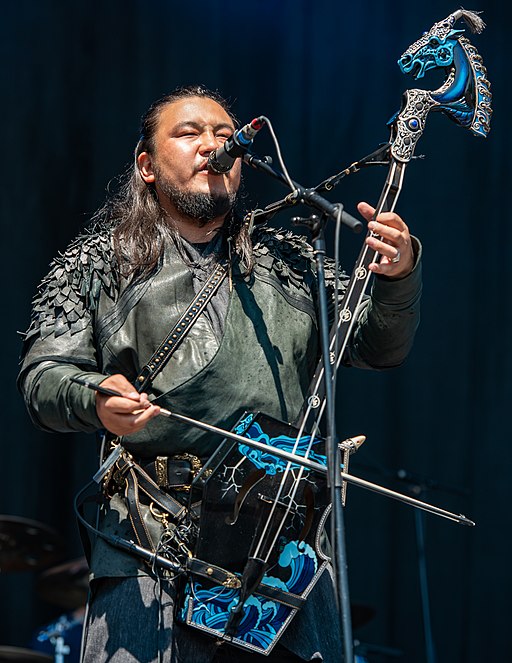Mongolian Heavy Metal
The HU

Sassan Tabatabai
The scene opens to the silhouette of a lone rider on a neighing horse against the backdrop of rolling hills and endless sky. He wears traditional Mongolian armor and holds up a scepter as if leading troops into battle. Over the sound of the horse we hear the roar of motorcycles as a posse of leather-clad riders wearing bandanas and skull rings follow the man on horseback onto the screen. They dismount from their choppers and take slow, deliberate steps towards the camera, all to the screeching sounds of a morin khuur, a two-stringed horsehead fiddle, a traditional Mongolian musical instrument. Dressed in all black, they bring to mind a clan of Mongolian warriors walking towards battle, with the swagger of confident, tested soldiers.
This is the opening scene of “Wolf Totem,” a music video by the Mongolian heavy metal band, The Hu. The video has logged over 20 million views in less than a year—an impressive number considering Mongolia’s population is not much above 3 million. The unique aspect of The Hu, which might account for their meteoric popularity, is that they play heavy metal using traditional Mongolian instruments and voice their lyrics in the haunting tones of Mongolian Throat Singing.
In their music, they evoke the rugged image of an equestrian warrior culture and often reminisce about the glory days of the Mongolian Empire, the largest contiguous land empire the world has seen, which in the 13thcentury controlled a massive territory that stretched from China to Central Europe.
The lyrics of “Wolf Totem” are emblematic of the headbanging vision the band wishes to promote:
Ten of us will strike you as thunder
Hundred of us will shatter your hearts
Thousand of us will destroy and obliterate
Ten thousand of us will hand you the wrath of Heaven….
Let’s cut through them as speed of flying falcon
Let’s burn within as the hearts of wolves
Let’s stampede with our horses
Let’s defeat them with the wisdom of our great Khaan, Chinggis!
Founded in 2016, the band’s name, The Hu, has etymological roots in the Mongolian word for human being and their self-proclaimed style of heavy metal, which they call “Hunnu Rock,” is inspired by the Hunnu, known in the west as the Huns, a clan that ruled much of Central Asia in the 5thcentury.
The four members of the band, Gala, Enkush, Jaya, and Temka were all trained in playing traditional Mongolian instruments at the Mongolian State Conservatory in Ulaanbaatar. The oldest of the four, 34 year old Jaya, also teaches at the Conservatory. Gala is the lead Throat Singer and plays theMorin Khuur(horsehead fiddle); Enkush plays lead Morin Khuur; Jaya plays the Jaw harp and the Tsuur(Mongolian flute); Temka plays the Tovshuur(Mongolian guitar). The exotic sounds of the instruments are enhanced by the unique timber of Throat Singing, which has its roots in the calls of cattle herders whose voice would have to carry over great distances across the wide-open expanse of the steppe. In Throat Singing, the singer produces a distinctively masculine growling sound where a primary pitch is layered over by a secondary tone.
The Hu released their first album, “The Gereg,” in 2019. Gereg, a term that dates back to the 1200s, refers to a “diplomatic passport” used throughout the Mongolian Empire. The album cover features a hand-painted Mongolian snow leopard with a single horn staring out at the viewer from atop gothic letters that spell out HU. It is an image with which the band readily identifies—a symbol of Mongolian character with a singularly unique feature.


